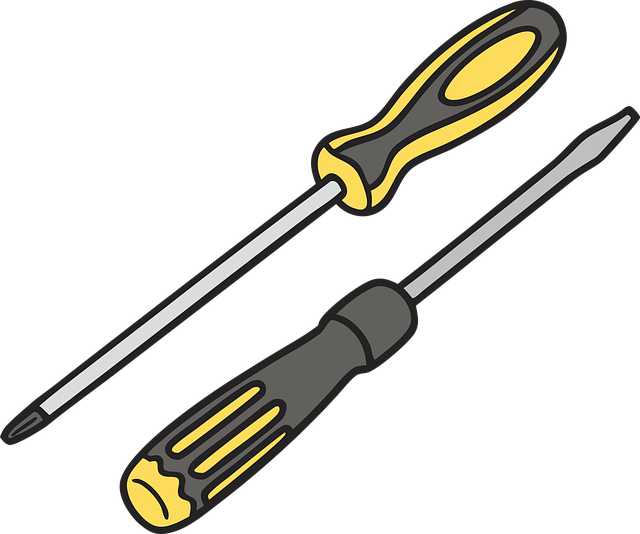Mold and mildew thrive in damp, hidden spaces, entering homes through small gaps around door seals. Door seal replacement is a proactive solution, blocking these intruders and preventing health problems and structural damage caused by moisture issues. Essential for humid areas or past water damage, regular seal replacement enhances energy efficiency and indoor air quality, mitigating mold/mildew growth similar to auto dent repair for vehicle aesthetics. To protect your home, identify the right door seal, clean the frame, measure gaps accurately, replace old seals with new high-quality ones securely, check for gaps, and maintain regular replacements.
Door seals are often overlooked yet play a crucial role in maintaining a healthy home environment. This article explores how simple door seal replacement can act as a powerful preventive measure against mold and mildew growth. Understanding the problem these unwanted substances cause, combined with recognizing the sealing power of doors, offers homeowners an effective solution. By following a step-by-step guide, you’ll learn to safeguard your spaces from moisture intrusion, ensuring a dry and comfortable living environment.
- Understanding the Problem: Mold and Mildew's Impact on Doors
- The Role of Door Seals in Preventing Moisture Intrusion
- Step-by-Step Guide: Effectively Replacing Door Seals for a Dry Home
Understanding the Problem: Mold and Mildew's Impact on Doors

Mold and mildew are insidious intruders that can thrive in damp environments, often lurking in hidden corners where moisture accumulates. When it comes to doors, these microscopic organisms can find their way into your home or business through small gaps and cracks, especially around door seals. Over time, neglect of these entry points can lead to severe health issues for occupants and significant structural damage to the building.
Door seal replacement is a proactive measure to combat this problem. By sealing off potential pathways, you create an impenetrable barrier against mold and mildew. This is particularly crucial in areas with high humidity or where there has been past water intrusion, such as bathrooms or entryways. Just as auto dent repair experts fix visible damage on vehicles, door seal replacement focuses on the invisible yet detrimental effects of moisture by addressing the root cause—sealing out the intruders before they take hold and spread.
The Role of Door Seals in Preventing Moisture Intrusion

Door seals play a pivotal role in safeguarding your space from unwanted moisture intrusion. These essential components, often overlooked, act as the first line of defense against environmental elements, including high humidity and rain. When a door seal is intact and properly fitted, it creates an airtight barrier, preventing water droplets and condensation from seeping into your home or workspace. This simple yet effective mechanism is especially crucial in regions with humid climates, where excessive moisture can lead to the proliferation of mold and mildew.
Regular door seal replacement is an essential aspect of automotive collision repair and car bodywork maintenance, similar to how auto dent repair addresses physical damages. Over time, door seals can become worn, cracked, or lose their elasticity, rendering them ineffective against the elements. By replacing these seals, you not only enhance the energy efficiency of your building but also create a healthier indoor environment by inhibiting mold and mildew growth.
Step-by-Step Guide: Effectively Replacing Door Seals for a Dry Home

Replacing door seals is a straightforward yet effective step to keep your home dry and prevent mold and mildew growth. Here’s a simple guide to ensure the job is done right. Start by identifying the type of door seal needed, as different doors may require specific designs. Purchase a high-quality, weatherstripping seal from a trusted hardware store or tire services provider. Before replacing, clean the door frame thoroughly to remove any debris or dirt that might hinder the seal’s effectiveness.
Next, carefully measure the length and width of the gap around your door, ensuring accurate cuts for the new seal. Remove the old seal with a utility knife, taking note of its placement. Insert the new weatherstripping, ensuring it fits snugly against the frame. Use adhesive or clips, as recommended by the manufacturer, to secure the seal in place. Once installed, check for any gaps and adjust if necessary. Regular maintenance and timely replacement of door seals can significantly contribute to a healthier home environment, preventing issues like auto body repair needs due to water damage and ensuring your space remains fresh and dry.
Door seal replacement is a proactive step towards creating a healthy living environment. By addressing moisture intrusion, you prevent the ideal conditions for mold and mildew growth, ensuring a safer, drier home. Implement these steps from our guide, and take control of maintaining a comfortable and allergen-free space. Regular checks and timely replacements can significantly impact your indoor air quality, so remember: a sealed door is a happy home!














